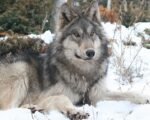The recent decision by Colorado wildlife officials to relocate a pack of wolves, including their pups, has stirred significant debate among biologists and conservationists. The move, prompted by a series of livestock depredations, aims to mitigate conflicts between wolves and local ranchers. However, experts warn that such relocations could have detrimental consequences on the wolf population and the broader ecosystem.
Impact on Wolf Behavior and Survival
Relocating wolf pups can disrupt their natural behavior and social structure. Wolves are highly social animals, and their pack dynamics are crucial for their survival. When pups are moved to a new environment, they may struggle to adapt, leading to increased mortality rates. Additionally, the stress of relocation can weaken their immune systems, making them more susceptible to diseases.
The relocation process itself can be traumatic for the pups. Being captured and transported to a new location can cause significant stress and anxiety. This stress can have long-term effects on their behavior, potentially leading to issues such as aggression or difficulty integrating into new packs. Biologists argue that these disruptions can hinder the overall success of wolf conservation efforts.

Moreover, the relocation of wolf pups can impact their ability to learn essential survival skills. In their natural habitat, pups learn from older pack members how to hunt, navigate their territory, and avoid dangers. When relocated, they may miss out on these critical learning opportunities, reducing their chances of survival in the wild.
Ecological Consequences
The relocation of wolf pups can also have broader ecological implications. Wolves play a vital role in maintaining the balance of ecosystems by controlling prey populations and promoting biodiversity. When wolves are removed from an area, it can lead to an overpopulation of prey species, which can have cascading effects on vegetation and other wildlife.
In areas where wolves have been reintroduced, their presence has been shown to benefit the ecosystem. For example, in Yellowstone National Park, the reintroduction of wolves has led to a decrease in elk populations, allowing vegetation to recover and benefiting other species such as beavers and songbirds. Removing wolves from an area can disrupt these positive ecological effects.
Furthermore, relocating wolves to new areas can create conflicts with existing wildlife populations. The introduction of new predators can disrupt the balance of local ecosystems, leading to unforeseen consequences. Biologists emphasize the importance of carefully considering the ecological impacts before making decisions about wolf relocations.
Alternatives to Relocation
Given the potential negative consequences of wolf pup relocation, biologists advocate for alternative strategies to manage wolf-livestock conflicts. One approach is to implement non-lethal deterrents, such as electric fencing, guard animals, and noise devices, to protect livestock from wolf predation. These methods can help reduce conflicts without the need for relocation.
Another strategy is to provide compensation to ranchers for livestock losses caused by wolves. This can help mitigate the economic impact on ranchers and reduce the pressure to remove wolves from the area. Additionally, promoting coexistence programs that educate ranchers and the public about the benefits of wolves and how to live alongside them can foster a more positive attitude towards wolf conservation.
Biologists also stress the importance of continued research and monitoring of wolf populations. By studying wolf behavior, movement patterns, and interactions with livestock, scientists can develop more effective management strategies that minimize conflicts and support the long-term conservation of wolves.














